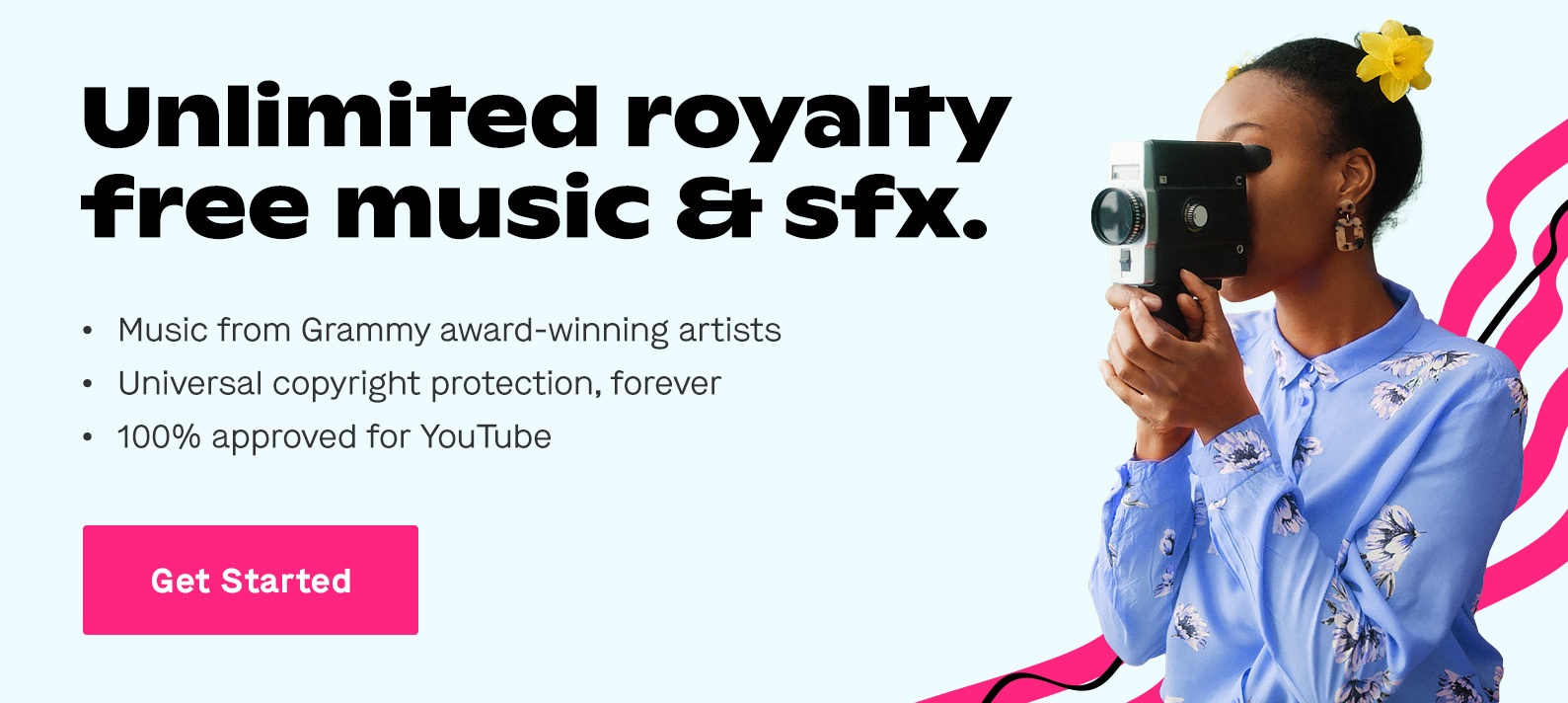You’re here reading our blog, so we can assume you already know that music is a key ingredient to creating excellent videos that will draw eyes, likes, subscriptions, and purchases. Good. Step one complete. Step two is actually picking the right background music for your videos. It’s a lot harder than it seems.
When you start scrolling through songs, especially in our high quality online music library, it can all feel overwhelming. How do you choose the perfect song? Start by focusing on a single genre of music.
Let’s take a quick look at why filtering by genre is a great way to focus your music search, and then we’ll review five of the most popular genres of music that today’s top videos use.
Why Filter Music by Genre?
If you wanted to paint an accent wall in your home you wouldn’t just drop into Home Depot and start looking at every paint swatch available. That would take forever!
Instead, you’d first decide on a color and then start reviewing different shades. Sure, there are probably about a million more shades of green than you imagined, but at least you’ve narrowed your search from every color of the rainbow.
Filtering different types of background music for videos by genre is the same principle. It cuts out all the noise you don’t want and allows you to focus on the beats that are best suited for your video.
At Soundstripe, we make it easy for our customers to browse the music genres they want by creating a genre filter in our music library. We currently offer 49 unique genres, from Indie to Hip Hop to Tribal.
Yeah, we’ve got the genres!
But what music genre is right for you? That depends on the video you’re making. Here are a few important questions to ask yourself that can help you narrow down the right genre for your video when choosing background music for videos:
- What is the topic/theme of my video?
- What emotions do I want my viewers to feel?
- What role does the music play in the video? Do I want it to be at the forefront or in the background?
- Who is my audience and what types of music are they most likely to respond to?
While we can’t answer these questions for you, we can tell you about the five most popular music genres we’re seeing in high viewership videos.
Cinematic Music

Are you stitching together your wicked skateboard moves, performing a stunt the involves exploding pieces of fruit, or doing something otherwise gritty and outstanding? Then you need powerful music that grabs your viewers by the throat and doesn’t let go.
When you start thinking of adjectives like big, sweeping, and victorious, there’s one music genre that has it all: Cinematic Music. This is as powerful as it gets.
It’s no surprise when Alsido Football decided to make a video called “90 Minutes – This is Football,” they chose cinematic music to pump up viewers and showcase the grit, pain and dedication it takes to put it all on the line during a game. (Note: No pig skin in this video. We’re dealing with European football, also known as soccer.)
Our Top Cinematic Music Pick: Surrounded by Your Love by Flux
Alternative Genre: Another option for big, bold music is the Power Ballad.
Corporate Music
You’re not looking to become the next great YouTube personality or win your own primetime comedy. You just want to show off your latest product or educate viewers about a pressing issue. In this case, you need music that will add a little spice to your video without overwhelming the content. It should be welcoming and help keep viewers interested while you make your point.
This is a perfect use for Corporate Music, which tends to be engaging and inviting without elbowing your main attraction off the stage. Corporate music is perfect for whiteboard animation videos, product showcases, and website welcome videos.
Elevations Credit Union uses corporate music perfectly in this fun, whiteboard video introducing its Elevations Energy Loans product.
Our Top Corporate Music Pick: Bygones by Shane Becker
Alternative Genre: Modern Orchestral offers beautiful tones and is a slightly different take for companies looking to stand out.
Ambient Music
When you have an important message to convey to viewers, ambient background music for your video can strike that perfect chord, giving viewers something to audibly chew on without dominating your message. Ambient music sometimes gets a bad rep as “background music,” or “boring,” but there is definitely a place and a need for soothing tones that don’t distract.
Ambient music works great for message-centric videos, teaching videos, and non-profits trying to showcase a problem. When Charity Water wanted to call attention to the fact that over a billion people in the world don’t have clean drinking water, they chose a simple-yet-stark ambient soundtrack to add weight to their video.
Top Ambient Pick: Approaching by Be Still the Earth
Alternative Genre: Blues picks up the pace, offering smooth rhythms without dominating your message
Acoustic Music

Acoustic music is showing up in all kinds of videos these days. Viewers tend to enjoy the warm tones, and editors like that acoustic is a highly flexible genre that can be applied to a wide variety of video types.
You’ll hear the fateful strum of acoustic guitars and an energetic drum beat all over YouTube, from lifestyle videos, building montages, inspirational videos, and snackable social media how-to vids.
Speaking of snackable, here’s an example of a super simple life hack video on how to cut up a watermelon. The author relies on a cheerful, island-themed acoustic soundtrack to make this useful and fun video. Twenty million views later, we think this acoustic music for YouTube worked.
Our Top Acoustic Music Pick: New Beginnings by Finn’s Fandango
Alternative Genre: Classical music was the original acoustic music. More instruments create a rich sound filled with tonal layers.
Comedic Music

Viewers love, love, LOVE funny, heartwarming, and charming videos. These are the videos that live for years on social media, reanimated again and again by shares and likes. Behind every comedic video is bubbly background music that instantly brings a smile to a viewer’s face.
The Dodo has perfected the one-two punch of comedy plus adorableness. Dog Yoga is just one example of this perfect matchup combined with an excellent music choice.
Alternative Genre: Folk soundtracks often evoke positive energy and big smiles.
Find Your Tune
These popular music genres can help you find the perfect background music for your videos, but don’t limit yourself to just these categories. We encourage you to explore all of our genres and to seek the type of music that matches the mood, purpose, and audience for your video. Also, keep checking back. We’re adding new music to our library and our genre categories all the time.
Explore your favorite music genres in our online music library today.


